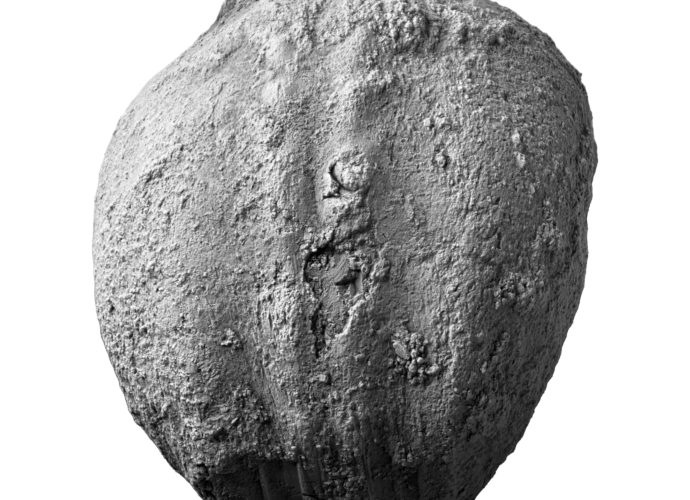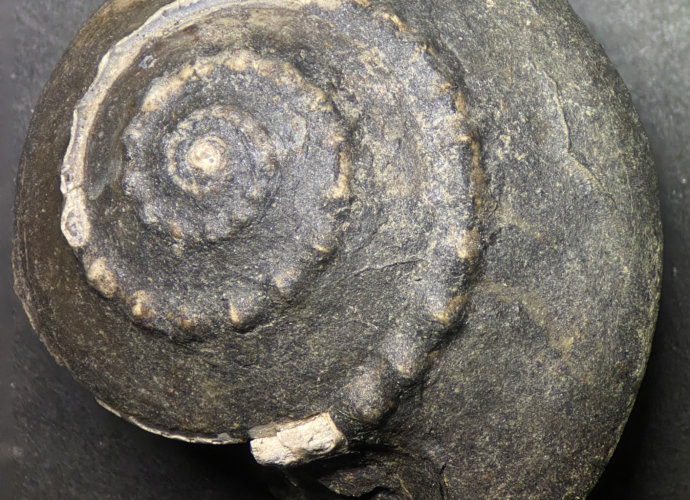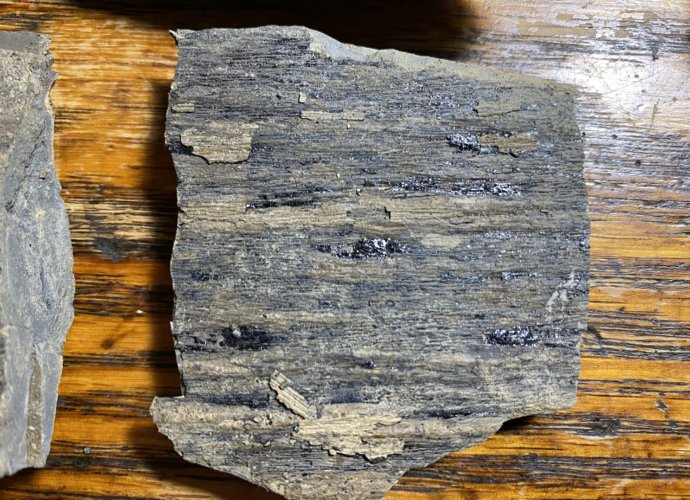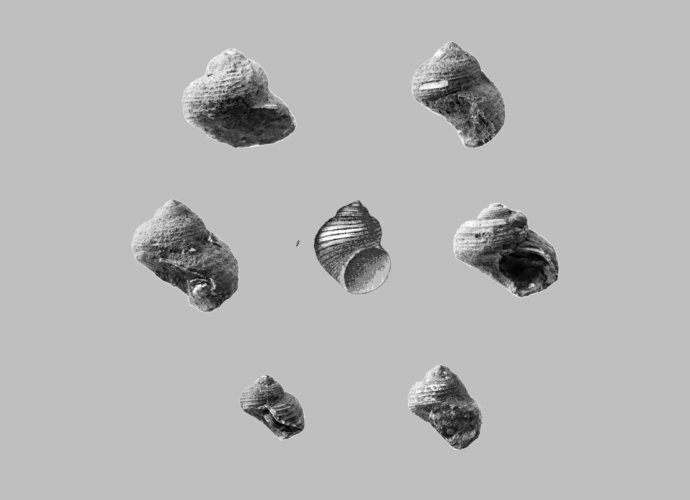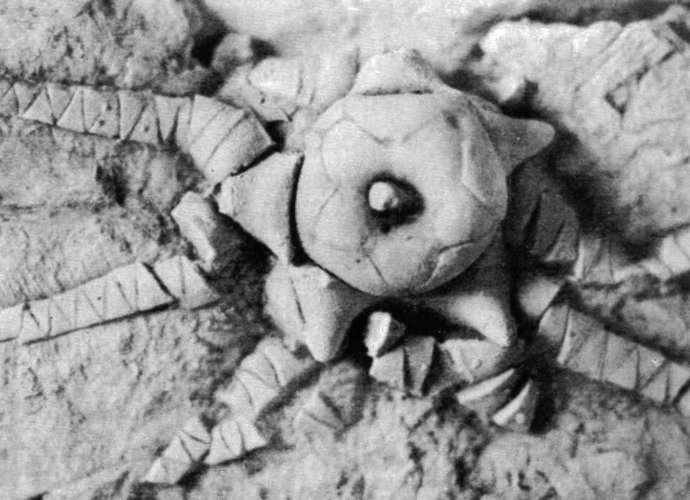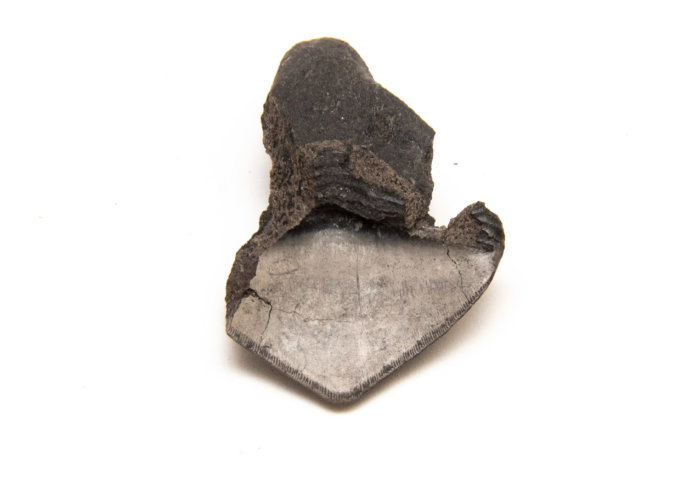Euphemites nodocarinatus
The gastropod Bellerophon nodocarinatus (=Euphemites nodocarinatus) was named by Hall in 1858 in a geological report of Iowa. The name means knotty/lumpy kneels (or carina), characterized by the dual lumpy ridges visible from the anterior margin across the shell. Members of Euphemites have spiral lirae that appear in the aperture and extend toward theRead More →

